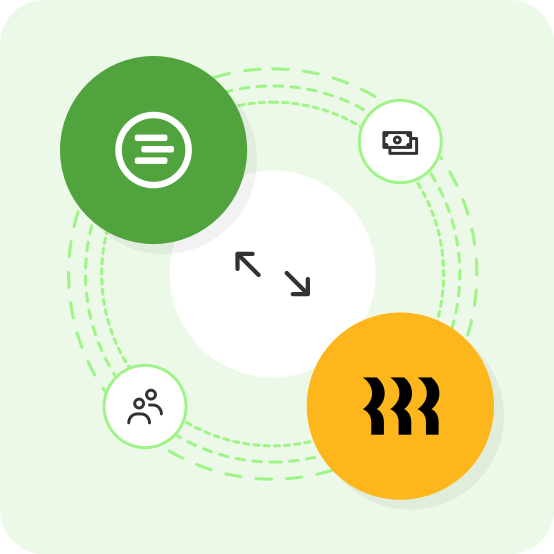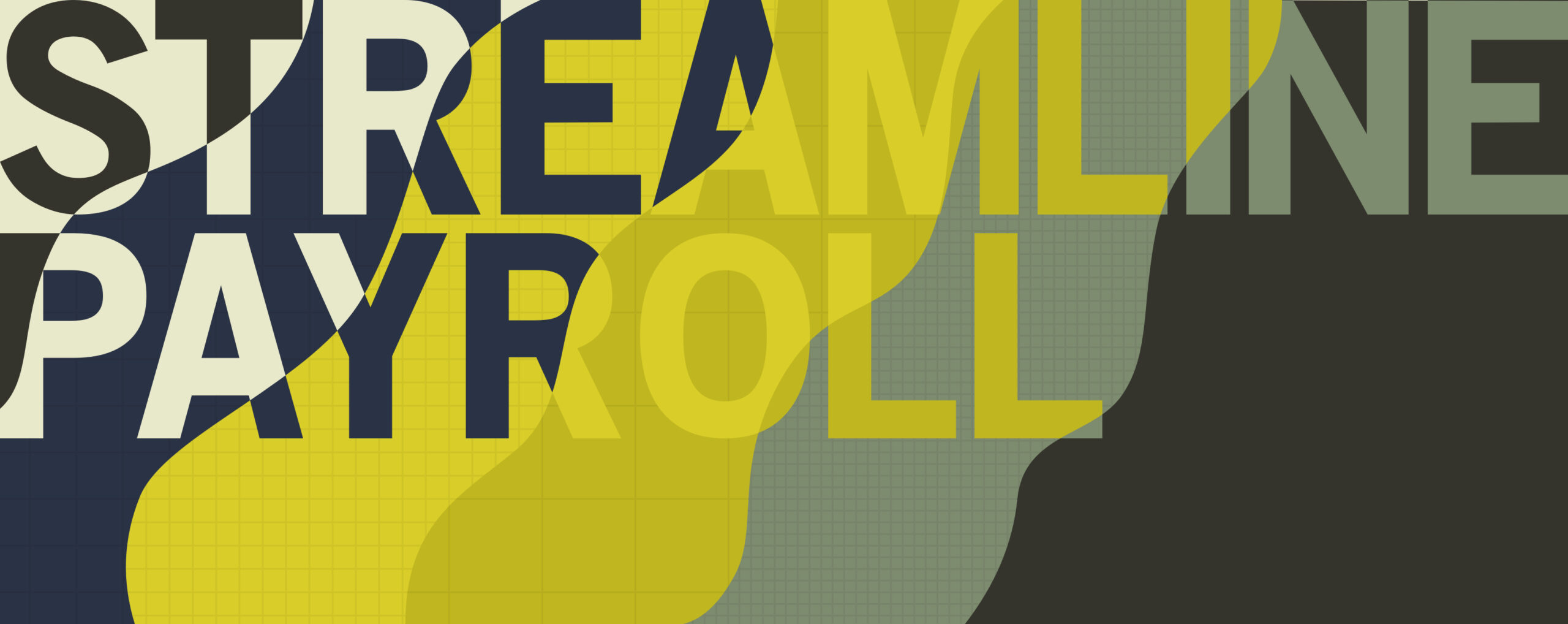How to Streamline Your Payroll Process
Try When I Work for free
Key takeaways:
- Complex payroll systems cause confusion that can cost you time and money.
- Investing in a payroll processing software is a quick way to reduce errors.
- Use automation as much as possible to avoid manual data entry.
- Regularly audit your payroll process to ensure legal compliance.
- Include your employees in the streamlining process to be sure you don’t miss anything.
Labor costs can make up to 70% of your total costs. That’s a lot. Tucked into that huge expense is payroll.
Unfortunately, payroll costs are far more than just the hourly rate you’re paying your employees. Hidden in those costs are benefits, taxes, fees, and the cost you might pay someone to run your payroll.
If you think doing payroll yourself is the key to reducing those costs, you’re forgetting how much time it takes and what that time is worth.
Payroll doesn’t need to be a headache. It doesn’t need to cost you time. It simply needs to be streamlined.
Table of contents
- Why do you need to streamline your payroll process?
- How to streamline your payroll process
- Invest in payroll processing software
- Integrate benefits and payroll into one system
- Use automated workflows when possible
- Create checklists and a control system to reduce errors
- Involve your employees
- Connect time tracking to your payroll system
- Use automated payments
- Don’t forget your employees in the equation
- Conclusion
Why do you need to streamline your payroll process?
It’s the complexity and associated hidden costs that makes payroll expensive.
Remove the complexity, and you’ll save time and locate the hidden costs that were lurking safely in the confusion.
Your accounting firm might be tucking fees into all things payroll so that every time a new employee fills out forms, you get charged. Or, if you’re handling your own payroll, you might not be aware of the forms, procedures, and other complicated tax requirements of the IRS—only to be visited with penalties down the road.
Labor costs can also break the bank in ways you might not expect or even be aware of if your payroll process is complicated. Overtime costs could be reduced if your payroll process is under control.
Complexity leaves room for error and sneaky costs. A streamlined process reduces all of it.
How to streamline your payroll process
How do you take a clunker process and turn it into a fast machine?
One of the repeated approaches used to streamline your payroll process is through automation, but there are other ways, too.
Invest in payroll processing software
Investing in an easy-to-use software system, like When I Work, that combines employee scheduling, time tracking, team messaging, and payroll is a great way to save time and money. Everything lives on the same platform, so all the data is right there when you need it—no importing timesheets or syncing data required. You’ll be able to run payroll in a single click, and you’ll always be able to see your true labor costs (not just estimates) in real time.
Add a payroll integration to save more time! Learn more about our available integrations and see how you can simplify scheduling and payroll for your team.
Integrate benefits and payroll into one system
Employee benefits can be complicated to manage. Some companies use different providers to handle their benefits and their payroll. That means entering employee data into multiple locations which takes time and runs the risk of introducing errors.
If possible, integrate your employee benefits directly into your payroll system. Even better, see if you can’t connect your worker’s compensation vendor to your payroll to save yourself time on required annual reports.
Use automated workflows when possible
Get rid of as much manual data entry as you can. A manual approach is prone to error and simply takes too much time—especially with a process where there’s repetition.
Re-evaluate your workflows for how you handle:
- Bonuses
- Pay errors
- Missing pay
- Overtime
- Time-off requests
Make a flowchart. Look for unnecessary repetition and bureaucracy. Look for areas where the stored data is in conflict with how you handle payroll, or difficult to access by those needing it to run your payroll.
Combining your employee scheduling software with your timesheet software is a great way to reduce errors. Digital timesheets integrated with the employee schedule will automatically pull in things like time-off requests and overtime.
Create checklists and a control system to reduce errors
While it would be great if there were never errors in your payroll, they do happen.
Whether or not automation is possible to part or all of your payroll, consider creating and using checklists. Checklists are famously used by the aviation industry to cut down on mistakes made out of rushed habit. Stick to the checklist, and nothing is missed.
At the very least, creating a checklist forces you to break down the process of what you’re doing and what you need to accomplish. It might reveal processes you can cut and those you might need to add.
Part of your checklist should be a regular audit of payroll to be sure of accuracy and legal compliance. It can save you a lot of trouble (and penalty fees) in the future. Speak to your accountant. Find out if this is something they do. Ask your employees to regularly verify their pay stubs and to alert you if something is amiss.
Additionally, try to build in checks and balances if you’re able. Have one person perform part of the payroll duties, and another be the one to finalize and confirm everything is a go. This should catch errors early, using two sets of eyes, before payroll is committed and paid.
That might feel like more hassle and less streamlining, but if you make a habit of it and the system runs smoothly (and it’s part of your checklist), you’ll save yourself so much trouble down the road when you have to fix an old mistake.
Involve your employees
Helpful processes for streamlining payroll doesn’t need to be all on you.
Your employees have a vested interest in payroll being done right. Find ways to automate employee involvement in payroll. This might include:
Employee onboarding
Use a system that allows new hires to fill out necessary forms (e.g. W-4, direct deposit) right away, on their own. Keep it from being a drawn-out process the first week of their job.
Employee hours
One of the headaches (and complications) when it comes time to do payroll is dealing with employee hour issues. There may be time off, incompletely marked time, or other discrepancies. Use an employee scheduling app or other system to let employees report their hours, and make requests regarding their shifts.
Employee scheduling
Overtime is a huge cost for employers. Getting your scheduling right is crucial to reducing payroll expenses. Without a streamlined process, it’s hard to get a good understanding of where the overtime is coming from.
Workforce optimization is the key to reducing unnecessary overtime. Using the right tools and team input, you can balance what your customers need with the right amount of scheduled staff.
Connect time tracking to your payroll system
Do you track employee time in one system, and then have to export it and bring it into your payroll system? Consider integrating your time tracking and payroll into one system. This is going to reduce errors, data loss, and confusion. It will be easier to make changes and fit in well with an automated approach where employees have some skin in the game when it comes to reporting their hours.
To get started, our time clock app lets you export employee timesheets and process payroll quickly with integrations to your favorite payroll provider.
When I Work preferred payroll partner
Make payroll simple with our preferred partner Rippling, an all-in-one platform for payroll, benefits, and compliance. Together, When I Work and Rippling help you save hours every week while reducing errors, staying compliant, and getting your team paid on time.

Use automated payments
Paying employees using direct deposit saves time and the cost of cutting paper checks.
Paper checks are susceptible to fraud. They can be lost. Ditch the paper checks and save time, worry, and the environment.
If you’re paying your employees frequently, consider consolidating payroll to once or twice a month, if possible. That will reduce payroll costs and the time it takes to run payroll.
However, you need to determine what payroll schedule works best for your employees and your situation. Avoid making a decision solely on what you think is best for your bottom line. Your employees have valuable input in this. And that leads us to the final point…
Don’t forget your employees in the equation
In the midst of making these kinds of changes, don’t hurt your employees.
In fact, figuring out how to streamline your payroll doesn’t mean you can’t still find ways to delight your employees with payroll in creative ways. Everything from making it easier for them to build a savings account to helping them understand taxes are all ways everyone can benefit from an improved process.
When I Work integrates seamlessly with payroll providers to save you even more time. Our payroll integrations, especially the one to our preferred partner, Rippling, help you connect scheduling and payroll in one streamlined workflow, so you can focus on running your business, instead of reconciling timesheets.






